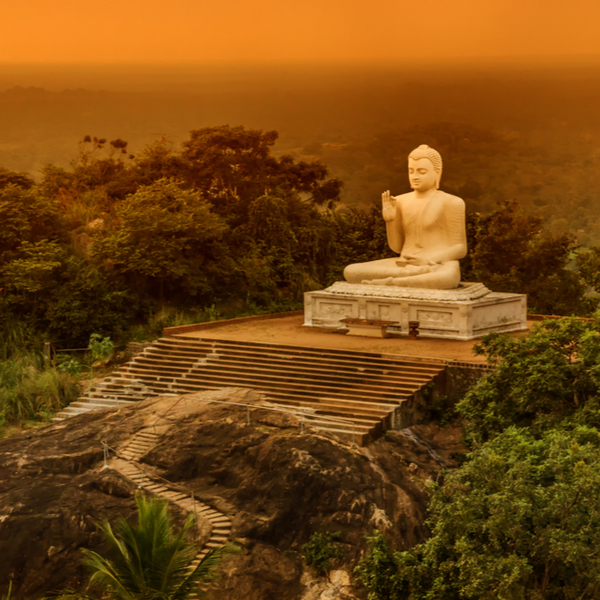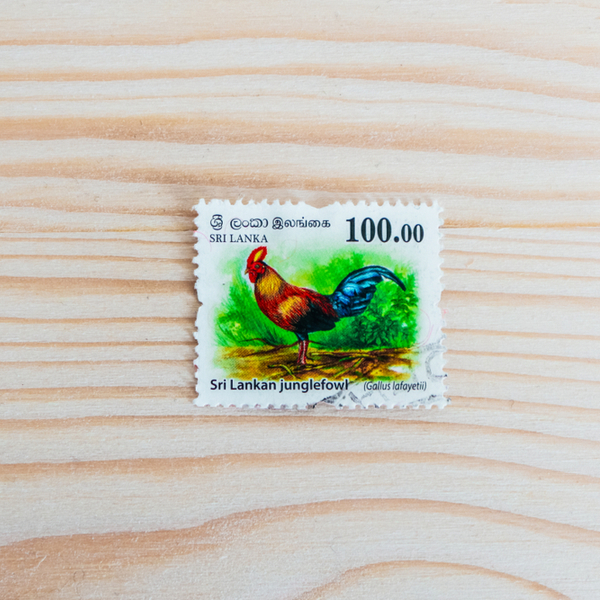Sri Lanka is a true amalgam of different people and customs in every sense of the word, with a distinct, vibrant culture that encompasses everything from ancient religious practices to the rapid modernisation seen in Colombo and other cities as they move on from the devastation of a civil war. Trying to get to grips with the cultural makeup of the country would require an encyclopaedia’s worth of reading, but if you’re looking for a crash course we’re here to help.
With that said, we at Orbzii would only encourage visitors to this wonderous land to delve deeper into anything about Sri Lanka culture that they find interesting, whether it be the centuries old engineering marvels or the unforgettable and moreish cuisine that’s been influenced by everyone from the Chinese to the Portuguese to the Moorish. If you want to get to grips with local culture but are overwhelmed by the sheer volume of how much there is to learn, then read ahead for our quick guide to the cultures and traditions of Sri Lanka.
History
Experts believe that Sri Lanka has been inhabited for over a hundred thousand years, and there are numerous notable examples of ancient Sri Lankan societies that were incredibly advanced for their time – especially when it comes to construction and urban planning. This means important historical and archaeological sites are dotted all over the country, with everything from ornate cave paintings to ancient fortresses open to tourists who want to learn about the diverse and unique history of Sri Lanka.
The bloody recent history of the country also plays a huge impact in many people’s lives, although the issues caused by it are becoming less and less prevalent as they move on from the civil war that devastated Sri Lanka for years.

Learning about this before you go, or even while you’re there, will only help you to enjoy your stay in the island nation more as you contextualise and empathise with the people who lived through real pain and horror.

Religion
Sri Lanka is a majority Buddhist country, although Hindus and Muslims make up large minorities. Regardless of their faith, the Sri Lankans are a devout people, with a 2008 Gallup poll confirming that 99% of the population consider their faith an important part of their daily life.
The official religion of the country is Theravada Buddhism, the oldest existing school of Buddhism. In fact, Sri Lanka has been Buddhist longer than any other country on earth. The most important thing to remember when visiting any holy sites is to wear long-sleeved shirts and trousers that extend well past your knees.
Don’t worry if you get too excited about the weather and forget to pack something suitable for temple-viewing – most of the larger, more aesthetically interesting ones will have people outside selling appropriate clothing so you can enjoy your visit without upsetting worshipers.
While Buddhists make up the vast majority of Sri Lankans, Hinduism is a large enough force in the country that it would do any visitor well to be aware of this ancient belief system. Widely practiced by the Tamil minority and concentrated in the North and Central areas of the country, many sects of the religion have in turn been influenced by Sri Lanka and Sri Lankan thought, giving Hinduism and the country a unique symbiosis.
Language
With such a diverse range of cultures and people calling Sri Lanka home, it makes sense that they have multiple official languages. Sinhala is the most widely spoken, named for the Sinhalese majority. Tamil is spoken by about a quarter of the population too, so remains vital to the Sri Lankan cultural stew. The legacy of colonialism means that English is also widely spoken by many Sri Lankans, especially in the urbanised areas of the country that have been modernising rapidly in the past few decades, although only Sinhala and Tamil are technically official languages. With that said, you’ll often find road and shop signs in all three.

Aside from this triplet, there are plenty of other languages spoken in the linguistic hodgepodge that is Sri Lanka, including Sri Lankan Malay, Sri Lankan Portuguese creole, and dozens of other dialects that would only be intelligible to locals. With all that said, there’s not much a smile, patience, and Google Translate can’t help you with.

Art, Music, and Books
Sri Lanka’s art scene is heavily influenced by numerous factors, especially when it comes to the contemporary artists, sculptors, and painters the country is producing. The cave paintings that have adorned numerous cultural and historical places of interest for millennia are mostly informed by Buddhism and Hinduism, whereas more recent work has hints of colonial influences, as well as tackling the subject of the recent war. Colombo is home to numerous galleries and other art spaces, so you can learn almost everything there is to know about Sri Lankan art in the capital. There are also many artisans and craft-people working with traditional methods like clay pottery throughout the country, and if you get the chance to visit more rural areas you’re sure to find some astoundingly insightful and beautiful pieces, from woven fabrics to whittled artefacts.
Music and dance in Sri Lanka is heavily influenced by religion, colonialism, and the legacy of slaves who were brought over primarily by the Portuguese. Drums and repetitive beats play a large role in the making of music here thanks to their hypnotic, meditative quality. String instruments modelled off those from the sub-continent also play a big part. In more modern times genres like rap and rock have also grabbed a foothold in the musical culture of the country, as has Bollywood-inspired music.
Sri Lanka has a recorded written history of several millennia that was heavily influenced by Buddhism and Hinduism. Nowadays there are celebrated Sri Lankan authors who write in English, Sinhala, and Tamil, with stories covering a wide range of topics that match the sea of change the country has been going through. Short stories and poetry are the preferred forms for most celebrated Sri Lankan literature, but there’s plenty of other kinds of work that gives a real insight into Sri Lanka culture and daily life for the locals, including ancient fables and folk tales that are usually passed on by word of mouth.
Animals and Other Symbols
Perhaps because it’s home to so many astoundingly beautiful species, birds are often seen as having a special symbolic place in Sri Lanka culture. Peacocks are especially vaunted, but birds in general usually have religious and cultural importance because of their ability to fly and their relation to religion. The national bird is the Sri Lankan junglefowl; endemic to the region, its colourful plumage has inspired plenty of artists throughout the country’s long history.
The flag of Sri Lanka has a lion on it to represent the Sinhalese majority, and lions (along with elephants and the grizzled giant squirrel) are unofficially considered the national animal of the country by many.

Thanks to its splendorous nature Sri Lanka also has an official National Tree (Ceylon Ironwood – important to the Buddhist majority), National Flower (the iconic Blue Water Lily, again heavily linked with Buddhism), and National Butterfly (the endemic Sri Lankan Birdwing). Despite cricket being the most popular sport in the country, Volleyball is the National Sport, although many believe Elle – a kind of slow-pitch softball – is more culturally relevant.

Food and Drink
You can learn a lot about a country by eating your way through it, and there aren’t many tastier propositions than doing so in Sri Lanka. The largest influences on the cuisine are South India, but because of its status as a trading hub and colonial history there’s plenty of other places that have influenced how food is made here. Moreover, highly trained Sri Lankan chefs are returning to the country and producing fusion food that’s reshaping the boundaries of the cuisine. Basically, if you love big flavours, variety, and a colourful plate that’s full of healthy vegetables alongside luxurious, filling dishes, then you’re in luck.
Rice, coconut, and palm trees are all vital parts of the food culture here, as are the spices that grow naturally on the island like cinnamon and cardamom. Tea also plays a massive part in socialising and eating, so if you love a cuppa you’re in the right country.
The local alcohol is named arrack and derived from palm sap – but when you’re trying it make sure to be careful as it’s often home-brewed and the strength can vary quite a lot.



















